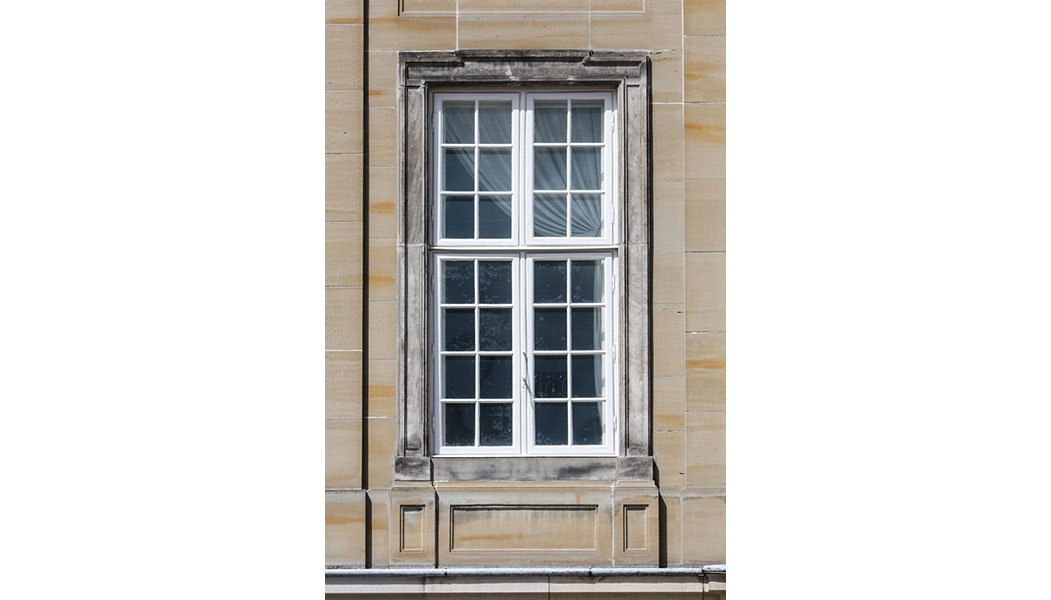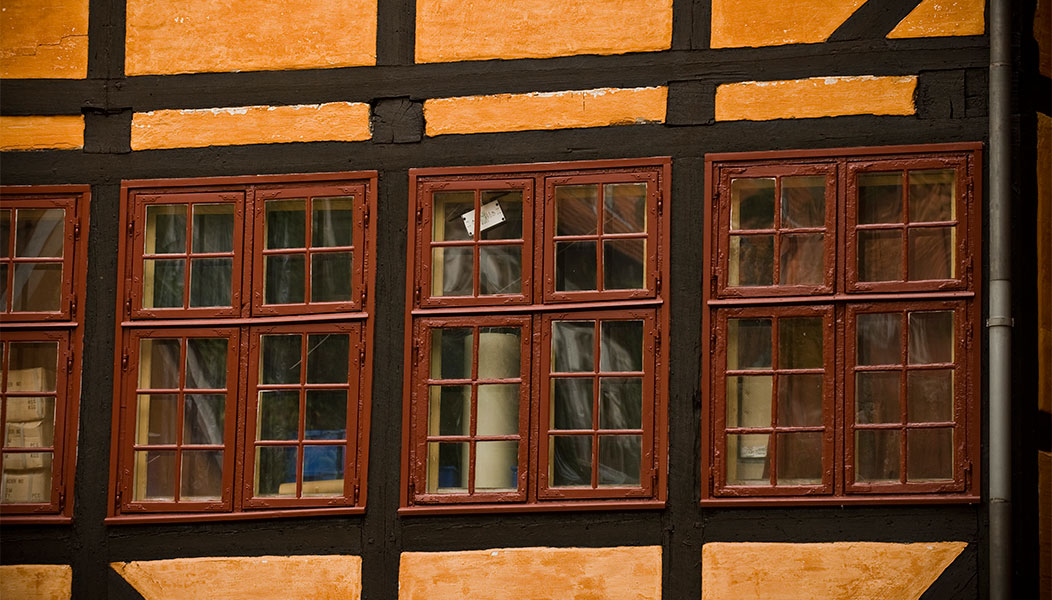Rococo began in France in the early 1700s. Rococo style was popular in Denmark from about 1730 to 1760, and in the rest of Europe from about 1720-1789. Rococo style was light, elegant, graceful and dignified, with clear Oriental influences. Whilst Rococo was a continuation of the decorative style of the Baroque with its columns and ornaments, its almost exaggerated lightness and elegance was a reaction against the dark and pompous Baroque architecture. Rococo is most well known from furniture, as well as its playful decorative approach to many townhouses – particularly doors, windows and stairways.
Rococo windows
Unlike Baroque windows, Rococo windows are asymmetrical in various aspects. The transom sits higher, creating four panes in the upper sashes and six panes in the lower sashes. The external fittings, modelled after acanthus leaves, are also asymmetrical. The fittings are tacked to the windows with hand-forged tacks. The sashes have a profiled rebate, or edge, that overlaps the frame by about a centimetre and makes the windows seal more tightly.




